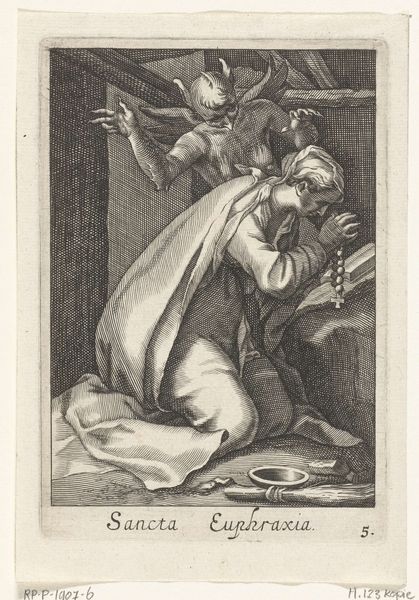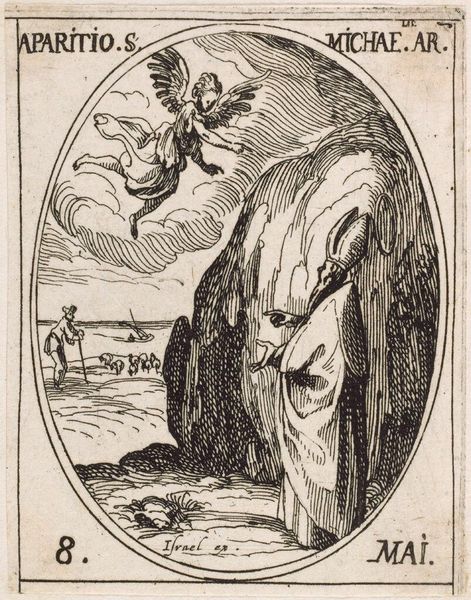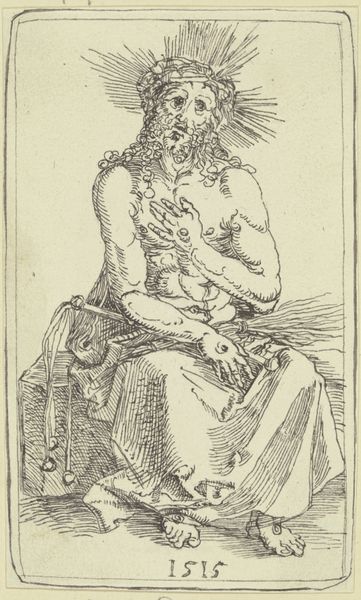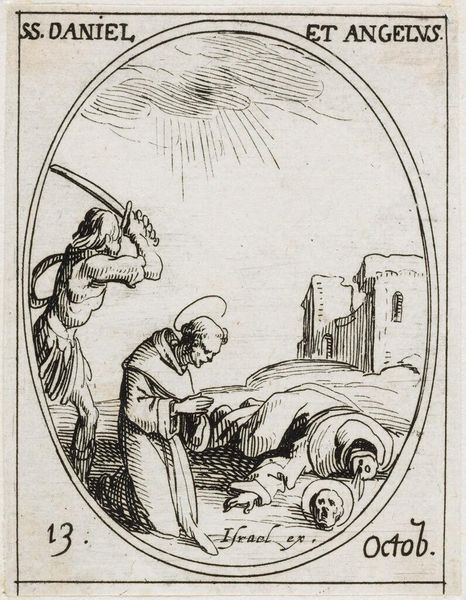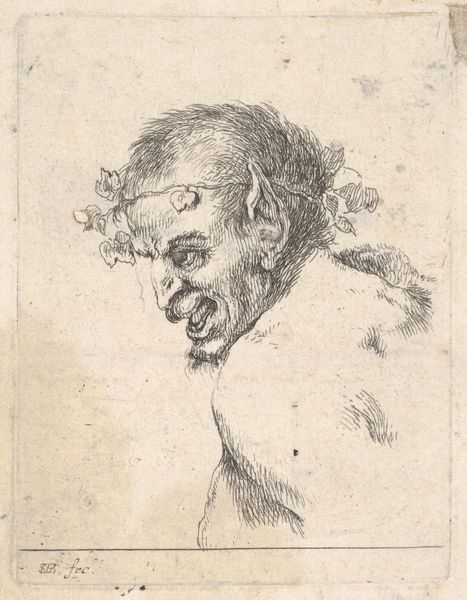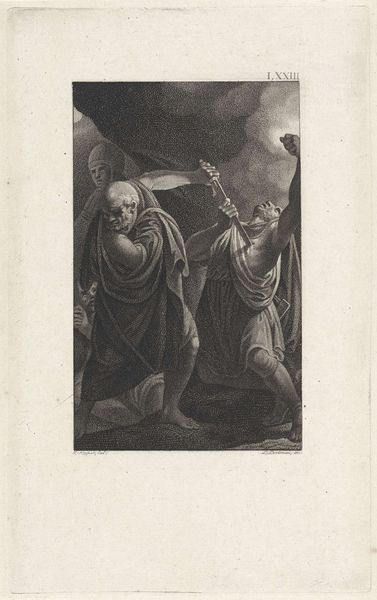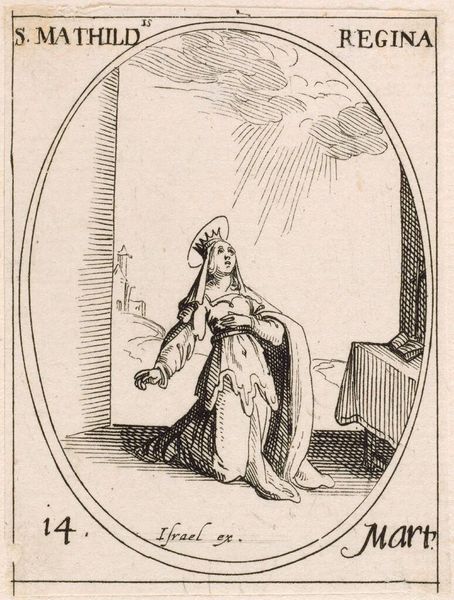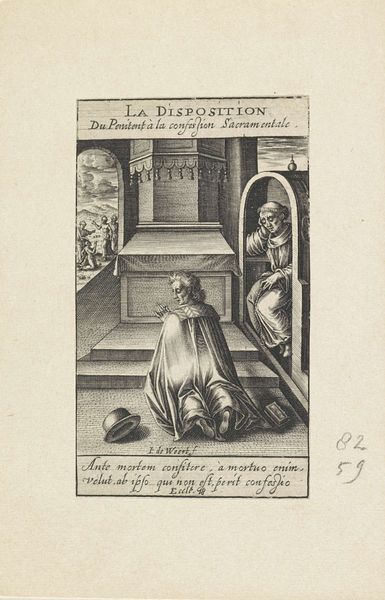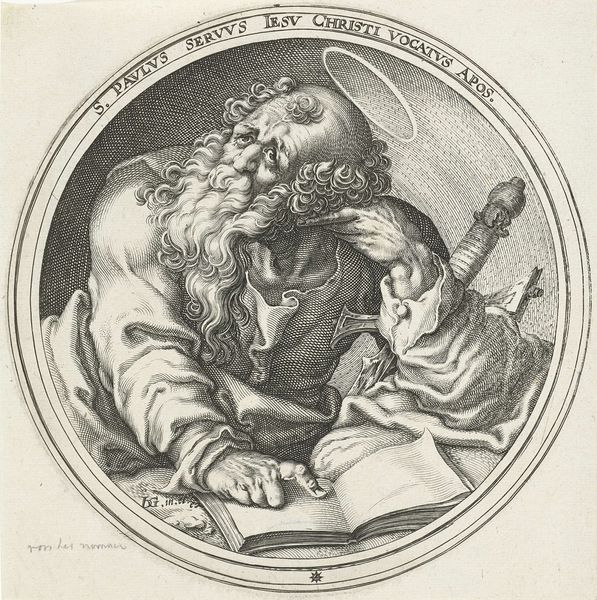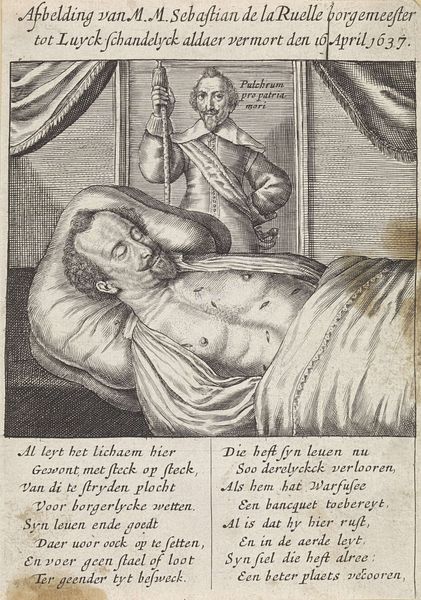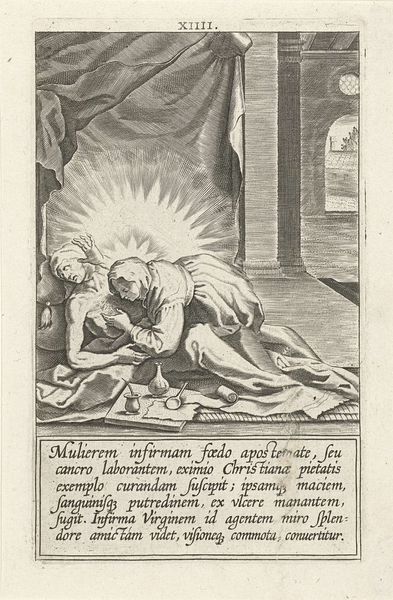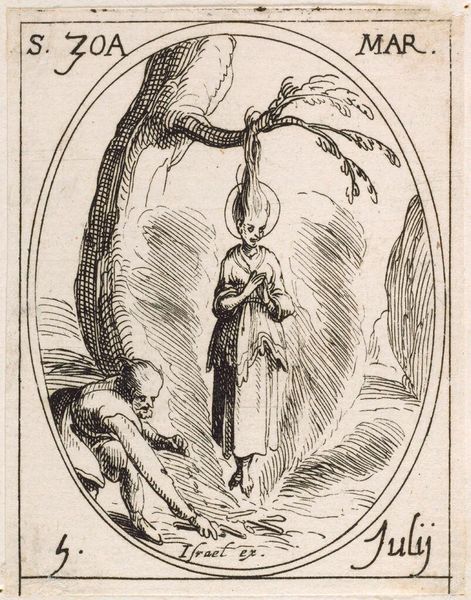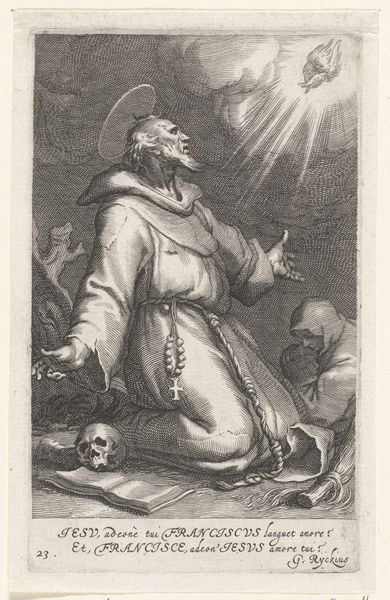
print, engraving
#
portrait
#
baroque
# print
#
caricature
#
old engraving style
#
figuration
#
engraving
Dimensions: height 115 mm, width 90 mm
Copyright: Rijks Museum: Open Domain
Curator: Look at the stark contrast and simplified rendering in "Monnik en een vleermuis", possibly created between 1670 and 1724 by Jacob Gole. What’s your immediate reaction to the piece? Editor: Disquieting! The intense, almost grotesque realism of the monk's face juxtaposed with the dark silhouette of the bat above creates a distinctly unsettling mood. The tight, circular composition amplifies this feeling. Curator: Gole, working primarily with engraving techniques, made prints intended for a burgeoning market that favored accessible, morally instructive subjects. Here, the burin’s incisive cuts shape not just form, but commentary. Editor: I'm drawn to the line work—notice how the density and direction create shading and texture on the monk's robes and face. There's also an intriguing dynamic between the coarse lines defining the figure and the smoother areas that model the light. It creates a sense of depth and volume that defies the simplicity of the composition. Curator: This print satirizes the clergy—reflect on how printmaking allowed this critique to reach a broad audience. It cleverly intertwines craft and cultural critique through caricature and wordplay. Look closely; the poem is about celebrating ignorance, linking to the monk's state. Editor: Absolutely. The material itself, engraving on a metal plate, speaks to the precision and control required. The limitations of the medium—black lines on white paper—are overcome by the skill in rendering detail and emotion. And notice, how the bat mirrors his obliviousness in its darkness. Curator: I see it too! The text at the bottom informs our reading. It invites a material understanding of its circulation and the economic circumstances surrounding print production. These objects fueled discourse across social strata. Editor: Considering the formal elements, it's fascinating how the artist uses light and shadow, coupled with such unflattering angles, to convey a complex message about knowledge and delusion. The contrast is more than aesthetic. It is symbolic. Curator: The convergence of craftsmanship, market dynamics, and sharp social observation is fascinating. Editor: Indeed. From a formal viewpoint to social dimensions of consumption—so many interesting things happening here in Gole’s deceptively simple piece!
Comments
No comments
Be the first to comment and join the conversation on the ultimate creative platform.

